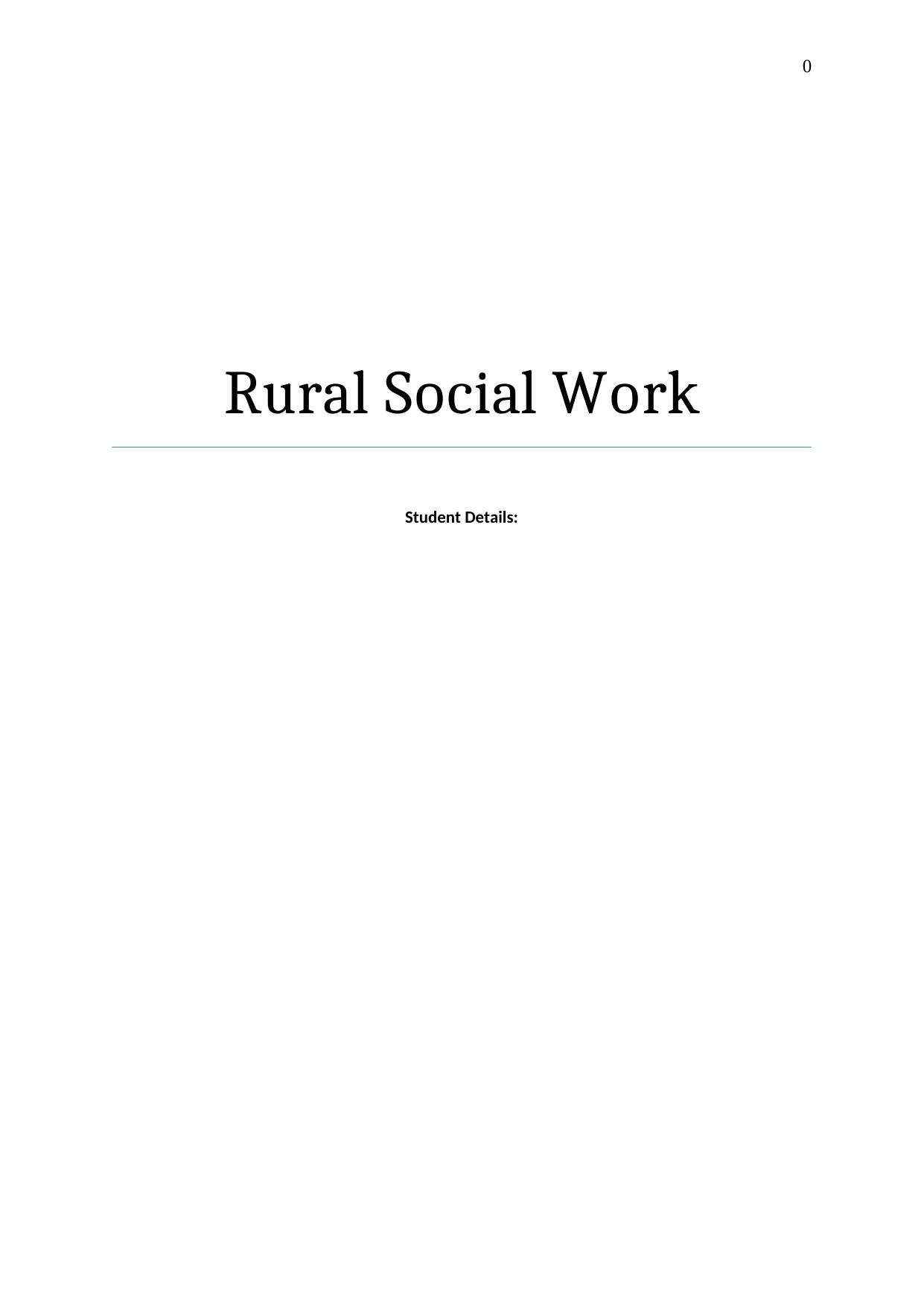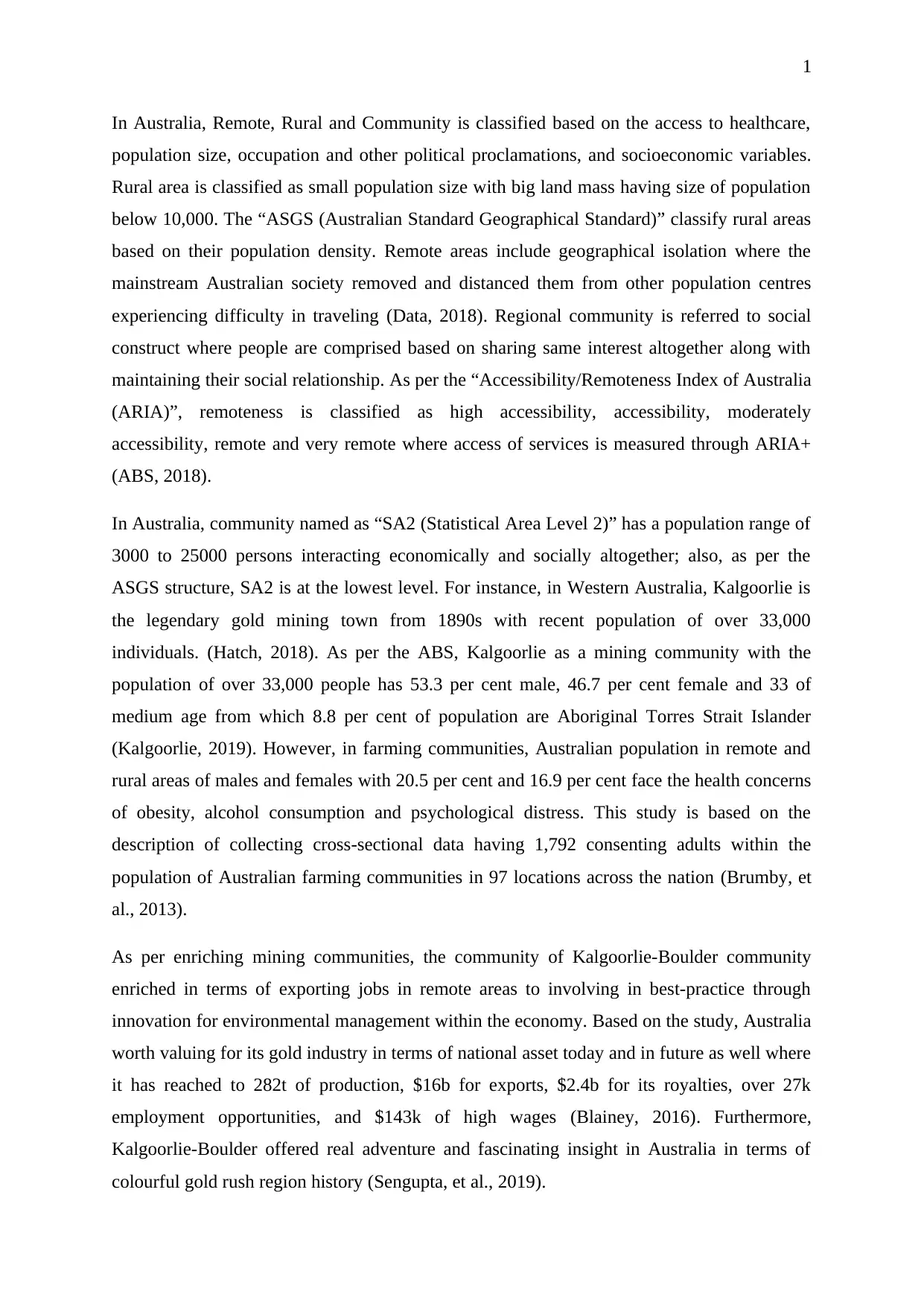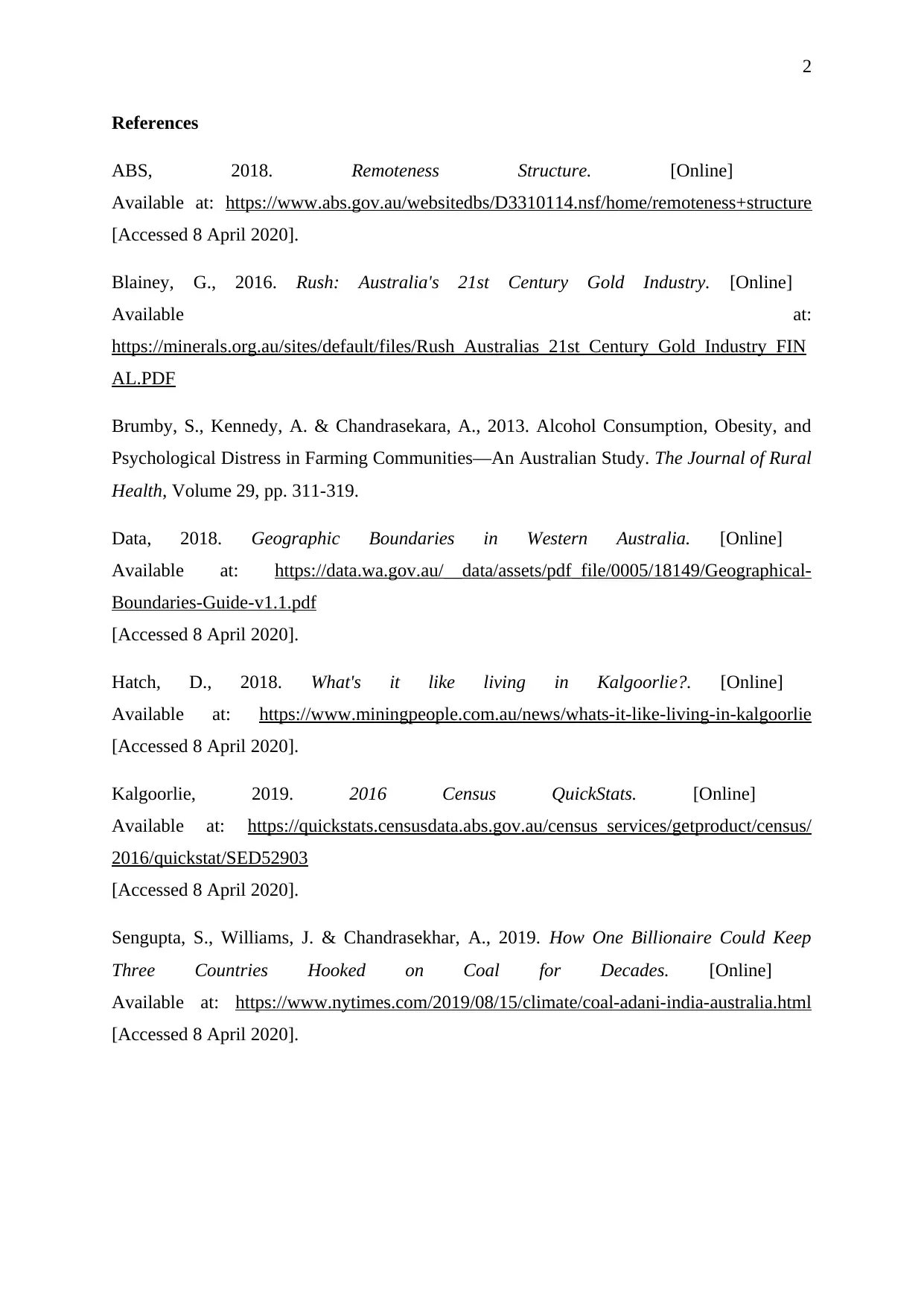Social Work in Rural and Remote Australian Communities Analysis
VerifiedAdded on 2022/09/16
|3
|707
|18
Homework Assignment
AI Summary
This assignment explores the definitions of 'rural', 'remote', and 'community' within the Australian context, emphasizing the country's vast landmass and relatively small population. It highlights the classification systems used, such as the Australian Standard Geographical Standard (ASGS) and the Accessibility/Remoteness Index of Australia (ARIA), to define these areas based on population density and access to services. The assignment uses Kalgoorlie, a gold mining town in Western Australia, as a case study, providing demographic data and discussing its economic significance and community enrichment. It references studies on health concerns in farming communities, such as obesity, alcohol consumption, and psychological distress, and highlights the importance of the gold industry to the Australian economy. The assignment draws on various sources to provide a comprehensive overview of rural and remote communities in Australia, focusing on their characteristics and complexities.
1 out of 3




![[object Object]](/_next/static/media/star-bottom.7253800d.svg)